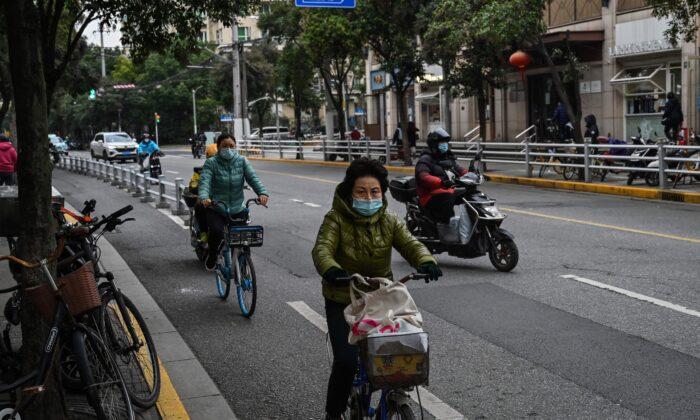China, the world’s most populous country, has reached a turning point in history as it recently announced its first population decline in 60 years. China analysts predict severe problems for the world’s second-largest economy, owing in part to its shrinking population.
According to Beijing critics, the Chinese Communist Party (CCP) has spent decades attempting to boost domestic scientific and technological innovation by any means possible, including theft. However, they believe that China’s goal of overtaking the U.S. economy by the 2030s or 2050s is now a pipe dream.
Some estimates suggest that China’s current population decline could be higher than reported because of rising COVID-19 death tolls.
Even under the most optimistic scenarios, China will lose a significant portion of its population, according to Gordon Chang, a distinguished senior fellow at the Gatestone Institute and the author of “The Coming Collapse of China.”
When fertility rates and other factors are considered, “China will probably lose about two-thirds of its population between now and 2100,” Chang told The Epoch Times.
“That’s about a billion people. So, I don’t know how any society can withstand that.”
According to Christopher Balding, an expert on the Chinese economy and a former professor at HSBC Business School of Peking University, China’s population drop isn’t shocking. He also believes that the decline began nearly five to seven years ago, and the CCP finally recognizes it.
China will miss out on the rapid economic expansion that’s generally enjoyed by countries with a young population, he noted, adding that India and Vietnam, both of which have very young demographics, are likely to be key beneficiaries of China’s population collapse.
“China is not going to be the consumption golden goose that we expected it to be,” he said.
Signs of Weaknesses
Beijing is aware of these challenges and has invested heavily in technology in recent years in an effort to avert a grim outlook for the economy.“The import numbers have actually been very concerning,” Chang noted.
“You’ve got to look at the projected decline in demography in the context of what else is going on in China, which is beset with simultaneous crises,” Chang said.
“You see the continuing debt defaults, plunging property prices, contracting economy,” he explained. “We’re seeing food shortages, deteriorating environment, COVID-19. When you put all that together, you have a country that I don’t think will be able to deal with the challenges that it faces.”

China on Trajectory to Become Poor
In 2022, China’s economy grew at one of its slowest rates in decades. Many media sources and experts attribute this weak economic performance to repeated lockdowns that hit households and businesses.With the population decline, “China is on a trajectory to become poor,” says Antonio Graceffo, a China economic analyst and Epoch Times contributor.
“China is in a situation that we call ‘old poor,’ which means that as much as we tell China’s economic growth is being exceptional, China is really still a poor country,” he told The Epoch Times.
Normally, countries can compensate for declining birth rates through money and technology to preserve their quality of living, as seen in Taiwan, Korea, Japan, and the majority of Western Europe, he explained. However, China has never caught up to the developed world.
“China got stuck in this low-end manufacturing,” he said, adding that the notion that the country is shifting into high-end manufacturing is untrue.
“I don’t believe China will surpass the United States,” he said.
Balding agrees that with a dwindling population, China will find it difficult to catch up to the U.S. economy. Productivity, consumption, and savings will all come under pressure, he says.
But more importantly, “their pension system is wildly underfunded, and this is going to put enormous pressure on public finances,” he said.
“You’ve already seen either bailouts of some of the local provincial pension funds or recapitalization of them.”
For years, China has been a huge, lucrative market for many global corporations, but this is set to change, according to Chang.
“Everyone had these ideas that China was going to have the world’s largest economy, was going to have consumption that would save Western companies. Well, that’s not true,” he said.
“I think that people should have known that earlier. More and more people are starting to understand the fundamental challenges in China’s society, and maybe even more importantly, we are starting to understand that the regime doesn’t have answers.”





